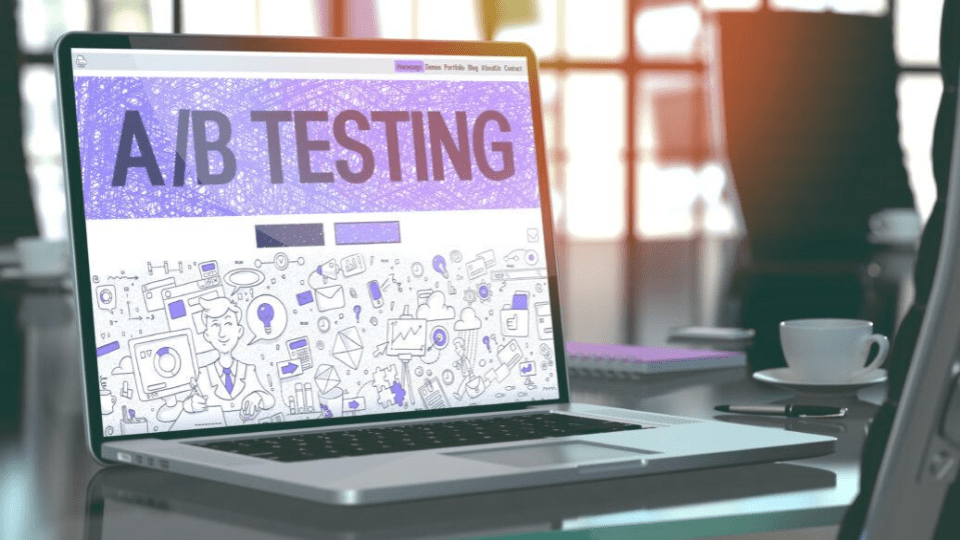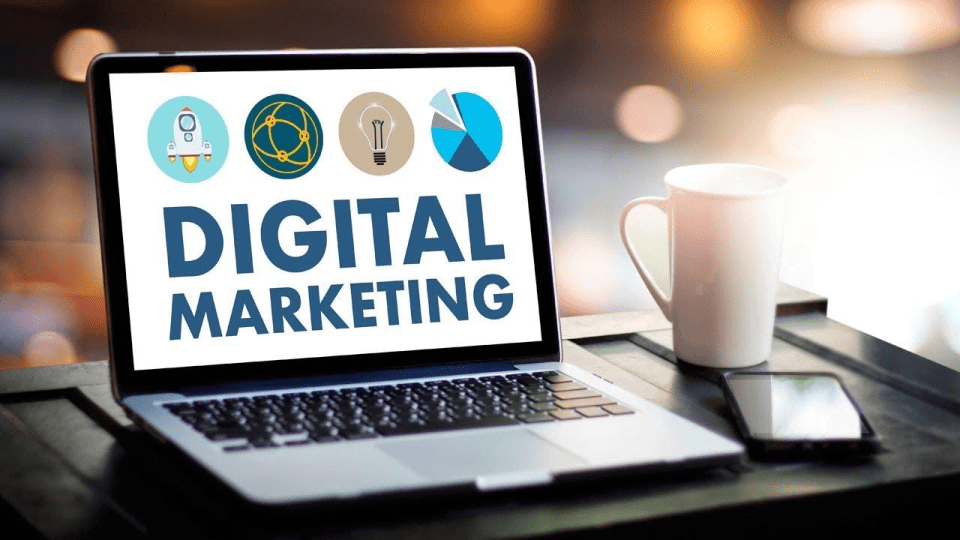Optimizing Online Forms to Maximize B2B Lead Generation
You recognize that 61% of B2B marketers regard generating excessively great leads as their biggest mission. These days, it is vital to capture the attention of ability customers and flip them into capability leads. There are masses of things, inclusive of powerful lead-era strategies, that could have a prime impact on the growth and sales of the agency.

The online form is one of the most effective tools in a B2B marketer’s toolbox. With the right planning, online forms are capable of capturing excessively exceptional leads by way of asking for essential information from fascinated customers. In this blog post, I’ll talk about the significance of well-designed online paperwork when it comes to B2B lead technology and some fine practices to optimize your bureaucracy to get the most out of them.
The Importance of Online Forms in B2B Lead Generation
1. Understanding Lead Generation
Lead generation is the act of finding and attracting possible customers for a business’s goods and services. In the B2B context, it means targeting other businesses and not individuals. Lead generation for B2B businesses is important because it provides a stream to feed the sales machine—so that in addition to a strong marketing engine, there is a pipeline of potential customers waiting for sales to take them downstream to revenue. That is, without an effective lead generation strategy, businesses can face difficulty discovering new customers, which will slow down their growth.
2. Role of Online Forms
In the digital age, online forms are one of the main tools to grab leads. A direct interface between a business and its potential clients, they serve as a means for companies to receive information on names, email addresses, company names, and job titles in one call. You use these forms embedded typically on landing pages, contact pages, or as part of some gated content strategy where users give their details in return for something of value, such as an e-book or white paper. Through integrating smart lead-capturing forms within your customer experience, businesses can make it easier, and more automated, for prospects to provide their information at the point of interest, and then easier for you to capture and manage the leads.
3. Learning and Growth Opportunities
While in the fast-paced tech world, developers need to stay relevant by adopting new forms and learning new concepts on a regular basis. Highly valued are companies that supply regular training, workshops, mentorship programs, as well as education sources. Below is BairesDev serves a culture of learning and innovation to motivate employees to attempt new technologies, and others to take up leadership roles. Not only does it provide the skilled building of technical skills but also a growth mindset.
a. Improved Lead Quality: Online forms play an important role in helping businesses get high-quality information from potential leads, improving lead qualification, and filtering out people who are away from converting.
b. Higher Conversion Rates: By simplifying user input into user-friendly forms, they raise the bar for lead capture friction and subsequent submission rates. Potential leads can be turned off by the complicated form.
c. Better User Experience: The forms tend to be intuitive and very easy to navigate, which leave a good impact and the chances of your clients engaging with you more is also abundant.
Key Elements of Effective Online Forms
1. Simplicity and Clarity
Keeping forms simple and easy to understand is crucial for user engagement and completion rates. Overly complex forms can lead to frustration and abandonment.
Here are some key points:
a. Keep it Short: Only ask for essential information to avoid overwhelming users. For example, if a newsletter signup doesn’t need a user’s birthday, skip that question.
b. Clear Instructions: Use plain language and avoid technical jargon. Provide examples or placeholder text to guide users on how to fill out each field correctly.
c. Logical Flow: Arrange questions in a logical order that feels natural to the user, maintaining a single-column layout to keep users engaged.
2. Essential Fields
Including only the must-have fields ensures that you gather the necessary information without deterring users.
Here are some essential fields and their importance:
a. Name: Personalized the interaction and is often required for identification.
b. Email: Crucial for communication and follow-ups.
c. Company: Helps in understanding the user’s professional background and tailoring services accordingly.
d. Job Title: Provides insight into the user’s role and responsibilities, aiding in more personalized communication.
3. User-Friendly Design
The design of the form is user-friendly, improving the overall form experience, and it’s more accessible.
Key aspects include:
a. Responsive Design: Make the form mobile-friendly to adapt it to whatever screen size the user is viewing it on. Many users will go to access forms on their smartphones.
b. Accessibility Features: Ensure that your form is screen reader compatible and it can navigate through using a keyboard, and there should be enough of color contrast to let it work for people who are disabled.
c. Clear Instructions: Make each field have set clear, concise instructions. inline validation shows users the errors immediately, at the point of failure so that they can correct their mistakes as they go.
So if you focus on these elements, you can build powerful online forms that are simple and quick to use, that your users will actually fill out.
Best Practices for Designing Online Forms
Here are some detailed best practices for designing online forms, tailored to maximize B2B lead generation:
1. Minimize Fields
This can have a great impact on friction, and abandonment rates by reducing the number of fields in your form. In a B2B context and especially if time is treasured, users are much more likely to complete shorter paperwork. According to a look, reducing the number of form fields from eleven to just four increased conversion costs by 120% percent. In the case of B2B bureaucracy, don’t ask for an excessive amount of data together with calls, electronic mail, agency, and job names.
2. Use Conditional Logic
Conditional common sense permits you to expose or conceal fields primarily based on personal responses, making the form-filling process extra dynamic and much less overwhelming. This technique guarantees users only see applicable questions, enhancing their revel in and finishing touch prices.
3. Incentivize Form Completion
Offering something valuable in return for filling out a form can motivate users to complete it. This is particularly effective in B2B lead generation, where potential leads might be looking for detailed information or resources.
Common incentives include free e-books, whitepapers, product demos, or access to exclusive webinars. These not only encourage form completion but also provide value to the user, establishing your brand as a helpful resource.
4. A/B Testing
A/B testing involves comparing two versions of a form to see which one performs better. This is crucial for optimizing form design and maximizing conversions.
According to Gartner, businesses that regularly perform A/B testing on their forms and landing pages see a 30% increase in lead generation. Test different elements such as field labels, button colors, and form length to determine what works best for your audience.
Integrating Forms with CRM and Marketing Automation Tools
Here’s a detailed look at integrating forms with CRM and marketing automation tools, focusing on seamless integration, data syncing, and personalization, tailored to maximize B2B lead generation:
1. Seamless Integration
By integrating forms with your CRM systems, lead management becomes automated, and every lead you capture from your forms will be automatically added to your CRM. That eliminates manual data entry, cuts down errors, and prevents any lead from getting missed.
A little bit higher than 52%, HubSpot reports that 52 percent of marketers prioritize the use of marketing automation platforms that integrate with other solutions to improve their marketing efforts. This seamless integration helps make the process of helping convert the prospects into qualified leads in quicker fashion.
If someone fills out a form on your B2B website and becomes a potential lead, your potential leads’ information is placed in your CRM the moment they fill in the form. What this does is initiate automated workflows that will automatically assign the lead to a sales representative or place them in a nurturing campaign to ensure they’re being followed up within a timely manner.
2. Data Syncing
This means that forms, CRM, and even marketing tools will all sync in real-time with the latest information. And for timely follow-ups and nurturing, this is critical, as the most recent data dictates the next step sales and marketers should take.
Benefits:
a. Timely Follow-Ups: Real-time syncing lets sales teams follow up with leads as soon as possible, increasing the probability of conversion.
b. Accurate Data: A single source of truth reduces these types of errors and duplicates as you are moving data across all platforms in a consistent manner.
c. Enhanced Nurturing: Being up to date with the information gives a better opportunity to create more personalized and more relevant nurturing campaigns, resulting in more engagement and conversions.
On average, organizations waste $12.9 million a year on bad data. An integration platform (iPaaS) enables businesses to automate data syncs between their CRM and marketing apps in order to achieve data quality.
3. Personalization
Collecting the data and using it to create integrated forms with your CRM and marketing automation tools lets you have personalized marketing efforts. B2B marketing is all about personalization because it gets you closer, makes you closer, and gets you interacting.
How it works:
a. Data Collection: Leaders provide information that is as detailed as they want it as far as their interests, company size, and industry are concerned.
b. Segmentation: It is then used to divide leads into different subcategories for targeted marketing campaigns.
c. Personalised Campaigns: Segmented data from this is then used by marketing automation tools to create personalized email campaigns, content recommendations, and follow-up sequences.
It has been proven that personalized marketing can increase revenues by up to 40%. CRM-based and marketing automation tools help businesses to easily tailor the content and messaging to individual leads, for which marketing reach can be exponential.
Conclusion
With the B2B market becoming highly competitive, business growth depends on how well you generate leads. Online forms that are well crafted can be a powerful lead capture tool and lead nurturing tool at the same time, in your sales funnel. Businesses should create forms that are engaging, as well as simple, consistent, user-friendly, and straightforward. But also, adding forms to CRM and marketing automation tools ensures smooth management of data, personalized marketing, and effective lead nurturing. Implementing these best practices allows businesses to fine-tune their lead generation efforts and increase conversions, as well as sustain long-term success.









